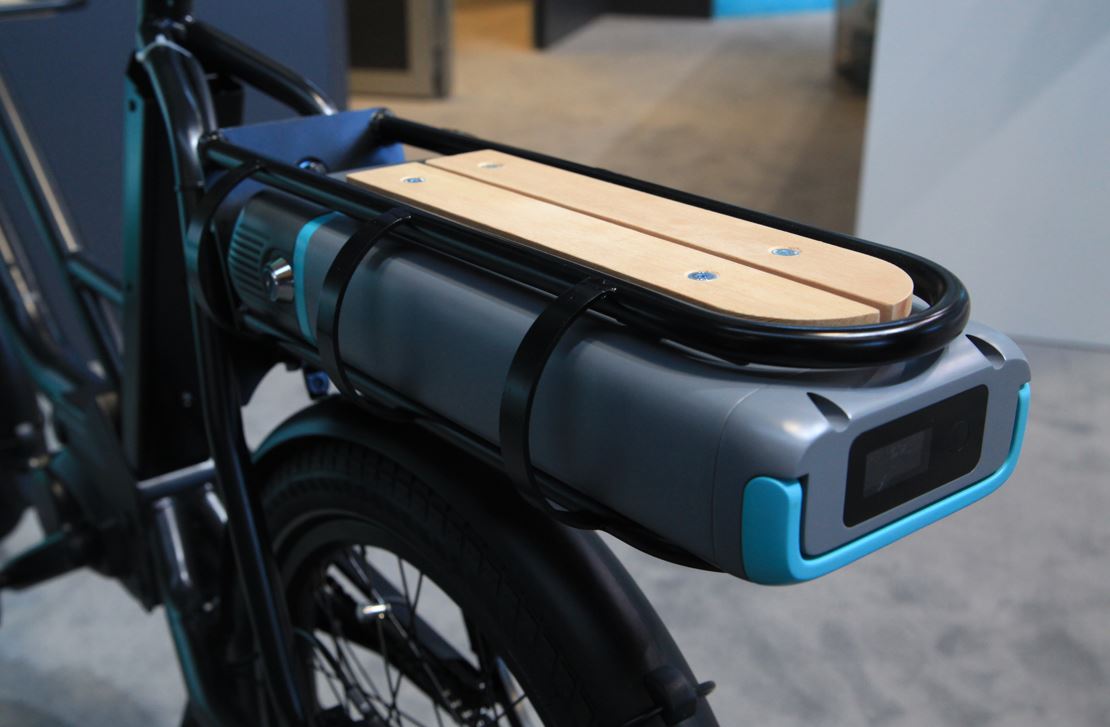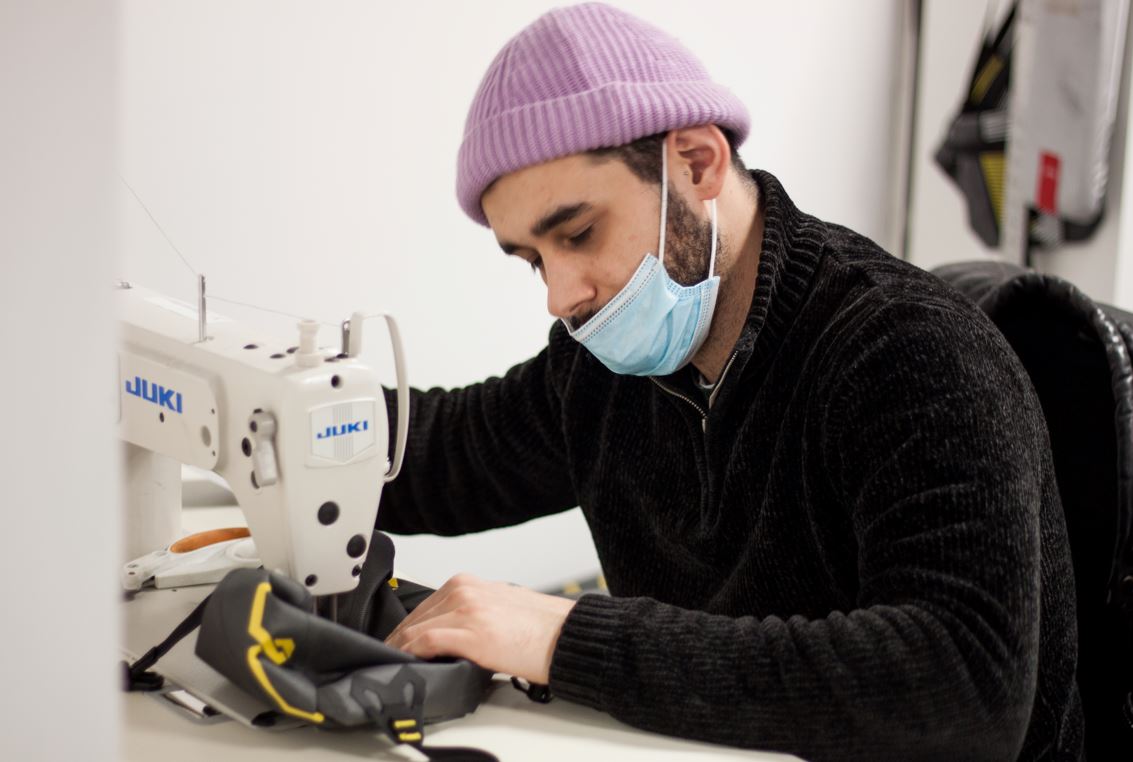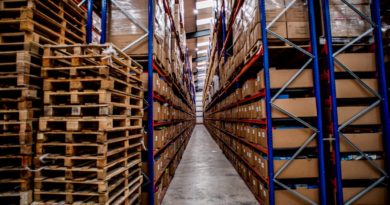Analysis: Bike industry sustainability reporting, batteries and clothing manufacture
The subject of how industry should now be actively monitoring, reporting and acting on emissions and pollutants has never been in sharper focus. On the back of COP26 and following a summer the gave countless snapshots into climate disaster CI.N explores the subjects of sustainability reporting in the industry, battery technology and recycling, plus how the manufacture of technical fabrics has improved to remove pollutants…
Responsibility and sustainability reporting
Trek followed through on an earlier pledge to deliver an annual sustainability report this September, offering its ten-point blueprint for “getting started” on the issue, with President Jon Burke writing that “in the end, it’s going to take all of us” in a prompt to the broader industry to also take responsibility for reducing their footprint.
For Trek the action plan is now rolling, with Air freight set to be reduced alongside corporate travel; an increased reliance on alternative materials to be paired with an ambition to remove all plastic from packaging. Furthermore, already underway is a bid to make the firm’s manufacturing landfill free, while the production plants will source their power from renewables. Underlining the fact that Trek sees the worth in all ships rising together, further points include a pledge to deliver more bike sharing, as well as pitch in to broader work to drive cycling’s modal share increase.
While future ambitions are good to have, the more difficult part for most looking at their contribution to the issue is to first face up to the hard truths on personal impact, put a tangible measure against it and then make the decision to chip away, even if there is some cost.
At Trek, this part of the process was surprisingly candid and now in public view. Assessing the impact of one of its best-selling bikes – The Marlin – the brand calculated that each unit equated to 116kg of CO2 released. It didn’t stop there either; the Fuel Ex weighted 153kg CO2; the Madone carbon costing 197kg and the Rail 229kg. The manufacturer, acting on calculations made by third-party agency WAP Sustainability, is not shying away from its contribution. Its estimate for ‘breaking even’ on the carbon emitted, versus savings made riding instead of driving, is a mileage of 430 miles for the Marlin.
Not alone in the action, Riese & Müller has likewise put a 696kg CO2 production value on its emissions for a Load 75 Vario cargo bike in a new 96-page sustainability report that pledges “we want to be the most sustainable company in the E-Bike sector by 2025.”
To begin with the firm has started with 18 different zero emissions sub-projects started in 2020 with the direct involvement of 27 staff. Since the start of 2021 the firm’s Campus in Mühltal has been climate neutral with the roof alone housing photovoltaic power systems drawing energy from the sun and even a green space customised to sustain wild bees.
It’s what leaves the business that has become the focus and for the 2019/200 business years milestones reached include moving to 100% FSC certified cardboard across all packaging. Downstream an inspection of the firm’s own suppliers saw its 25 largest inspected, resulting in 32 new zero waste projects. This has resulted in 70,000 m2 of packaging material saved on frame deliveries alone.
While a 35% daily commute by bike rate means that nearly 200 employees are parking their bikes at the HQ each day, responsibility is placed on the company as much as the employee. In any case, production is the focal point for anyone taking efforts to reduce emissions seriously. For Riese & Müller, in partnership with auditors from the myclimate Foundation, it was found that overall the production of a Load Vario 75 accounted for 1,137kg of CO2, once the logistics chain, packaging, disposal and production had been accounted for. While this may sound problematic for the planet, the same researchers established that it equate to just 8% of a typical car’s CO2 life- cycle (which registers 311 g of CO2 e/vkm).
In October those in the U.S. bike industry, recognising incoming debate during the Federal Budgeting process in Congress, set about rallying behind a new Climate Declaration. The hope is to add weight to the idea of a carbon fee that will lend weight to a shift to cleaner transport forms.
“Elected officials pay attention when business leaders speak up, and this is the bike industry’s opportunity to get the attention of Congress and the White House and say collectively that we demand action,” says Matt Tucker, co-lead of the Business Climate Leaders outdoor recreation team.
Battery innovation, recycling and reuse
 With electric bike sales surging and the balance of investment very much titling toward pedal assisted bikes there is one sustainability conversation that is hard to ‘green- wash’. First of all, what is the climate cost of batteries and secondly what happens to the batteries at the end of life?
With electric bike sales surging and the balance of investment very much titling toward pedal assisted bikes there is one sustainability conversation that is hard to ‘green- wash’. First of all, what is the climate cost of batteries and secondly what happens to the batteries at the end of life?
While touring Eurobike this year it was curious to hear that on the commercial side of cargo bike usage, the requirements of the likes of DHL, for example, generally hold a different standard to what’s passable to a consumer.
Akku Energie Systems, the battery supplier to Deutsche Post’s cargo bike fleet, meets a certain requirement for a battery cell that prioritises lifetime longevity over individual charge and range. This parameter shift opens different doors in cell production, explains Robert Mellinghoff, the firm’s sales manager.
“It’s not only battery longevity in play, actually. Fleet managers are acutely aware of the risks posed by traditional batteries in fire terms; multiplied across lots of vehicles, there can be a profound difference in insurance policies if a battery can be made less risky. For Akku our battery cells are about as natural as is possible, we even use 30% less lithium. The makeup of our cells is Lithium Iron Phosphate, which is not flammable. There’s no cobalt in the mix, nor some of the other elements that ultimately can create an environment where thermal runaway can be possible. For a fleet manager that’s a key criteria, but also these batteries are cleaner and last longer.”
Akku’s numbers tally to around 3,000 charge cycles, or about eight years’ worth of daily use, after which time the materials within remain non-toxic. For context, NMC batteries tend to have closer to 750 charge cycles. As a result of this spec sheet, Deutsche Post has been decked out its e-Bike fleet with Akku’s LiFePO4 batteries for more than eight years already.
“We have just gotten the first battery packs back to send them into their much-earned retirement. Once the cells come back we store and reuse the energy they provide. Currently we don’t have a lot stored, because the batteries are rarely finding their way back to our facility because they are still working as they are supposed to,” adds Mellinghoff.
On the recycling front, we are now aware that Specialized is pursuing an effort to bring its key markets options on safe and sustainable disposal of its e-Bike batteries. In the USA this began with a partnership with Redwood Materials, a business set up by the former chief technology officer at Tesla. In the UK that effort is now mirrored alongside Ecolamp who will recover the materials from used cells.
Circling back to Riese & Müller to what we strongly suspect is an industry-leading figure; an $183,000 investment made in the past financial year has seen battery recycling from its bikes hit 97.2% of all units sold, with efforts to return batteries at end of life now active in 23 partner countries.
Back in the UK, Fenix Battery Recycling has this summer announced a battery collection pilot scheme running in the South West that is expected to be rolled out across the UK and Ireland. In a partnership with Eco Recover, the used cells from personal electric vehicle will be collected from pre-approved drop points by a fleet of electric vehicles and dropped with the recycling plant. (See eco-recycle.co.uk for the detail)
Damian Lambkin, Business Development Director at Fenix Battery Recycling said this process will stop used cells being shipped overseas: “As Fenix is the only UK-based solution for lithium-ion battery recycling, our partnership with Eco Recover will provide a more eco-friendly recycling solution that does not require materials to be exported to the USA or Europe for recycling.”
On the subject of cell recycling, Swedish EV battery giant has just produced the first fully recycled cells delivering on par performance with new raw material batteries.
Clothing: 10% of global emissions and legacy materials
 It is generally accepted that fashion is almost entirely incompatible with sustainability, if only for the fact that the more than 50% of garments have been found to be thrown out within a year. As the seventh largest global industry, extrapolate the fact that 2,700 litres of water is used to create just one cotton t-shirt and you’ll quickly understand how the industry is quickly contributing to the water crisis in many nations. Polyester, found in 60% of garments made, is three times more carbon intensive to produce still.
It is generally accepted that fashion is almost entirely incompatible with sustainability, if only for the fact that the more than 50% of garments have been found to be thrown out within a year. As the seventh largest global industry, extrapolate the fact that 2,700 litres of water is used to create just one cotton t-shirt and you’ll quickly understand how the industry is quickly contributing to the water crisis in many nations. Polyester, found in 60% of garments made, is three times more carbon intensive to produce still.
With this in mind, an increasingly educated consumer has been found to be receptive to brands with genuine environmental considerations taken into production. An expert on the subject of sustainability in fabrics is Charles Ross, who points to a handful of brands leading by example.
“Patagonia, The North Face, & Timberland (along with the Kering Group & Eileen Fisher) are now using some materials from the ReGenerative Agricultural practice (cotton, wool, leather) which sequester more carbon than the whole manufacturing process emits. In short the idea is to prevent soil loss, better control irrigation and boost biodiversity. That means if this technology was to be applied to Fast Fashion garments then the kids buying the stuff would be doing net good for the planet! If the anthropological demand from teenagers can’t be changed – then let them have better stuff, I say.”
Longer lasting, better quality companies is another thing Ross advocates, as if a sustainable company is not profitable it goes bust and then the learnings are lost. So top down education and advocacy is important and of course the same principle applies to the garment itself; quality is always better than quantity, especially if the garment can be repaired for generations to come.
That is something Apidura has brought into play. Co-founder Tori Fahey told CI.N considering a product’s full life cycle needs to be part of the creative process.
“Our approach resonates with our audience because it’s authentic and consistent with our overall ethos of thoughtful consumption – we don’t do seasons and reject manufactured obsolescence. Repairs aren’t a bolt-on or something we view as ‘nice to have’, rather they are an integral part of our business and something we openly celebrate through our Built to Last content, our second life marketplace, Revive, and the wealth of DIY repair guidance on our website.”
Particularly pertinent to the sustainability discussion is the cycling industry’s use of technical fabrics, some of which have been particularly rough on the planet to date in manufacturing and life cycle terms. Where weatherproofing is a key criteria, PFAS are a particularly persistent ingredient that can easily find its way into everything from our drinking water to the air we breathe.
With that in mind, mass fabrics produced Polartec, which supplies to many top tier cycling labels, has made it a core part of its modern mission to remove this harmful substance from its production. A milestone was reached in July of 2021 to draw a line under PFAS in the firm’s DWR water repellency treatments.
“Achieving non-PFAS treatments within our product line is an important milestone in our commitment to sustain- ably made performance fabrics,” said Steve Layton, Polartec president this summer.
Plastics as a whole remain something of a necessary evil, however. Apidura’s Fahey explains: “Until technology brings more solutions, plastics play an important, functional role in technical gear, and we need to be mindful of their impact and use them thoughtfully.
“Apidura largely uses materials made to our own specifications, which gives us greater control and insight into the impact of their creation and use versus their longevity and ability to perform in harsh environments, while protecting bikepackers’ survival gear. The one place this is not currently the case is our use of VX21 – a popular material in the bikepacking world and one that we use as a legacy of our earliest designs. With better alternatives emerging, we have been working to develop a replacement material of our own specification that can perform to the same level without the need for DWR treatment and will be phasing out VX21 as our existing stock depletes.”



